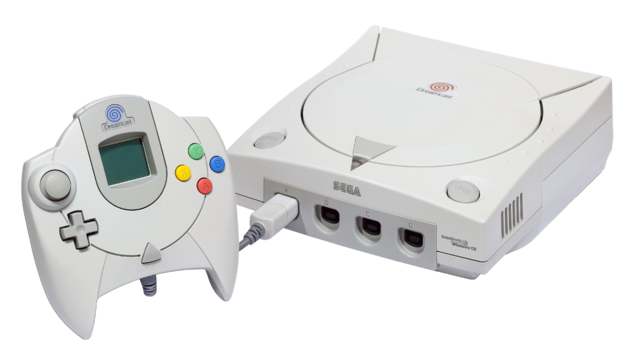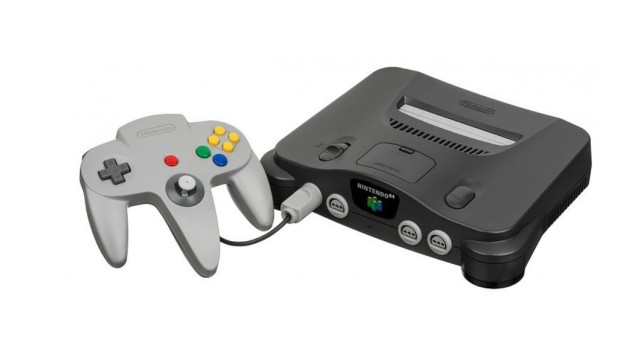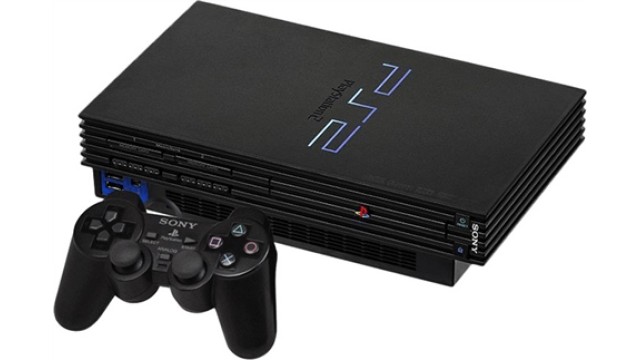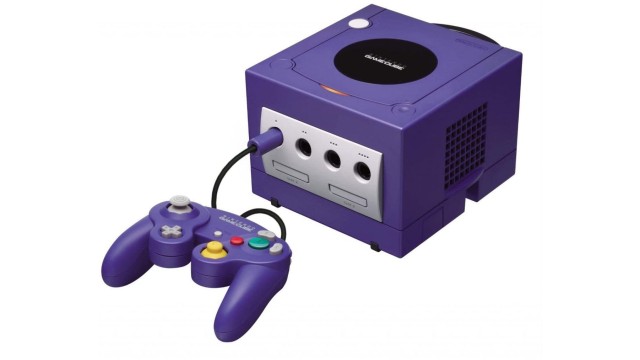
DreamCast
Launches: 1998
Discontinued: 2002
Life span: 4 years
Units sold: 10 600 000
Generation: 6th
Country releases of DreamCast
 Japan: Japan: | 27/Nov/1998 | 29000 | ¥ |
 USA: USA: | 09/Sep/1999 | 199 | $ |
 Brazil: Brazil: | 04/Oct/1999 | ||
 United Kingdom: United Kingdom: | 14/Oct/1999 | 200 | £ |
 Spain: Spain: | 14/Oct/1999 | 39990 | PTS |
 Australia: Australia: | Nov/1999 | ||
 India: India: | 21/Nov/2000 |
 DreamCast technical specifications
DreamCast technical specifications
CPU: Hitachi SH4 (32 bits)
Memory: 16 MB
 DreamCast video specifications
DreamCast video specifications
DreamCast graphics capabilities.
Video chip: PowerVR2DC
Video connection:
DreamCast video modes
| 640×480 | 16770000 colors using a 16770000 colors palette |
 DreamCast audio specifications
DreamCast audio specifications
DreamCast sound capabilities.
Audio chip: Yamaha AICA
Audio mode: Stereo
 Controllers of DreamCast
Controllers of DreamCast
 DreamCast games support
DreamCast games support
Support: CD
DreamCast games
Games library: 624
DreamCast story
The Sega Dreamcast was a console that marked both a daring leap forward in the gaming industry and the beginning of the end for Sega as a hardware manufacturer. Its creation, development, launch, and market reception are a tale of innovation, strategic missteps, and the harsh realities of an increasingly competitive gaming market.
The creation of the Sega Dreamcast can be traced back to the mid-1990s when Sega was reeling from the commercial failure of the Sega Saturn. The Saturn, despite being a powerful system, had been poorly received due to its high cost, complex architecture, and lack of third-party support, particularly in North America and Europe. These failures were compounded by Sony’s PlayStation, which had quickly become the dominant console of the generation. Sega knew that it needed to act quickly to develop a new console that could not only regain the trust of consumers but also compete against Sony's upcoming PlayStation 2.
In response to this urgent need, Sega began working on what would eventually become the Dreamcast. The project was initially divided between two internal teams. One team was based in Japan and led by Hideki Sato, while another team was in the United States under the leadership of Irvine "Irv" Kaplan and Richard Doherty. The Japanese team, working closely with Hitachi, developed a console architecture based on the SH-4 CPU, which was a high-performance chip capable of impressive 3D graphics processing. Meanwhile, the U.S. team, in collaboration with 3dfx Interactive, proposed an alternative design that was eventually shelved in favor of the SH-4-based system. This decision was partly influenced by Sega's desire to create a globally unified platform, avoiding the fragmentation that had plagued the Saturn.
The development of the Dreamcast was characterized by a commitment to cutting-edge technology and a strong focus on network capabilities. Sega recognized that the future of gaming might involve not just standalone experiences but also online play. As a result, the Dreamcast was designed to be the first console to include a built-in modem, allowing for online gaming and internet browsing straight out of the box. This was a bold move at a time when home internet connections were still in their infancy. The Dreamcast also featured a PowerVR2 graphics processor from VideoLogic, which was capable of rendering detailed 3D environments with fluid animations, making it one of the most powerful consoles on the market.
The hardware design was complemented by a controller that, while unconventional, was innovative. The Dreamcast controller featured a VMU (Visual Memory Unit), which was a unique memory card with a built-in screen. The VMU could be used to display additional game information, act as a mini-gaming device when removed from the controller, and even be exchanged between players for data transfer. This forward-thinking design highlighted Sega's intention to create an ecosystem that was both interactive and user-friendly.
During the development phase, Sega also emphasized the importance of creating a robust game library that could rival the PlayStation’s diverse offerings. To this end, Sega enlisted some of its best internal studios, including Sega AM2, led by Yu Suzuki, and Sonic Team, led by Yuji Naka, to develop exclusive titles that would showcase the Dreamcast’s capabilities. Games like Sonic Adventure and Shenmue were designed to push the boundaries of what was possible on a home console, with expansive worlds, detailed graphics, and deep gameplay experiences. The development process also saw Sega aggressively courting third-party developers, offering them the tools and support needed to create high-quality games for the new system.
The launch of the Sega Dreamcast was a highly anticipated event. Sega aimed to regain its lost market share and restore its reputation with a console that was not only powerful but also relatively affordable. The Dreamcast was first released in Japan on November 27, 1998, and the response was enthusiastic, with the initial shipment of consoles selling out almost immediately. However, Sega faced challenges in maintaining this momentum due to supply chain issues, which led to shortages and frustrated consumers. Despite these issues, the Japanese launch set the stage for the Dreamcast’s global rollout.
The Dreamcast was launched in North America on September 9, 1999, a date heavily promoted by Sega as "9/9/99." The North American launch was a resounding success, with the Dreamcast breaking sales records by selling over 225,000 units within 24 hours and generating $98 million in revenue. This made it the most successful console launch in history at that time. The system was supported by a strong lineup of launch titles, including Sonic Adventure, Soulcalibur, and NFL 2K, which were well-received by both critics and consumers. Sega’s marketing campaign for the Dreamcast was aggressive and well-coordinated, focusing on the system’s advanced technology and the immersive experiences it offered.
The market reception of the Sega Dreamcast was initially very positive. Consumers and critics alike praised the console for its powerful hardware, innovative features, and impressive game library. The Dreamcast quickly established a loyal fan base, and its early success seemed to indicate that Sega had finally overcome the struggles that had plagued the company since the Saturn. However, this success was short-lived, as the Dreamcast soon faced overwhelming competition.
The impending release of the Sony PlayStation 2 loomed large over the Dreamcast’s success. The PlayStation 2, announced to have backward compatibility with the original PlayStation and the ability to play DVDs, generated enormous consumer interest. Many potential Dreamcast buyers decided to wait for the PS2, which promised not only cutting-edge gaming but also multimedia functionality that the Dreamcast could not match. This was a significant blow to Sega, as the PlayStation 2 was quickly becoming the must-have console even before its release.
Adding to Sega's woes was the lack of strong third-party support. Despite Sega's efforts to attract developers, many major game publishers were hesitant to commit to the Dreamcast, particularly as they prepared to support the PlayStation 2. This resulted in a game library that, while strong in certain areas, lacked the breadth and depth of its competitors. Furthermore, Sega's previous financial troubles, largely due to the failures of the Saturn and the 32X, left the company with limited resources to sustain long-term support for the Dreamcast.
By 2000, it was becoming clear that the Dreamcast was struggling to maintain its momentum. Sales began to slow, and Sega’s financial position grew increasingly precarious. Despite a number of critically acclaimed releases, such as Shenmue, Jet Set Radio, and Phantasy Star Online (the first console MMORPG), Sega could not overcome the growing dominance of the PlayStation 2. The introduction of Microsoft’s Xbox and Nintendo’s GameCube further eroded the Dreamcast’s market share, leaving Sega with little choice but to reevaluate its position in the hardware market.
In early 2001, Sega announced that it would discontinue the Dreamcast and exit the hardware business altogether, focusing instead on software development. The decision marked the end of an era for Sega as a console manufacturer. The Dreamcast was officially discontinued on March 31, 2001, just two years after its North American release, with Sega shifting its focus to developing games for other platforms.
The legacy of the Sega Dreamcast is one of both innovation and tragedy. The console was ahead of its time in many ways, offering features that would become standard in later generations, such as online gaming and downloadable content. It also boasted a number of innovative and beloved games that continue to be celebrated by fans. However, Sega’s financial instability, combined with the intense competition from Sony, Microsoft, and Nintendo, ultimately doomed the Dreamcast. Today, the Dreamcast is remembered as a cult favorite, a console that represented Sega’s last great effort to push the boundaries of gaming technology, but one that could not survive in a rapidly changing and increasingly competitive market.
Previous Sega console: Sega Saturn



